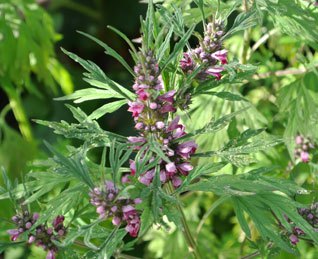[1] Barefoot Doctor's Manual- 1977 Prepared
by the Revolutionary Health Committee of Hunan Province. Original Chinese manual-
Victor W. Sidel. Originally published by Dr Joseph Quin and the Fogarty International
centre, Bethdesda (1974). Madrona Publishers Seattle Washington ISBN 0-914842-52-8
[2] A Complete English Dictionary of Medicinal Terms in Chinese Acupuncture
and Herbalism 1981- Henry Lu Chinese Foundations of Natural Health- The Academy
of Oriental Heritage, Vancouver, Canada.
[3] Translation notes from Gary Seiford and Hocu Huhn - NSW College of Natural
Therapies. Sydney Australia (1982).
Images
1.
chempics.wordpress.com
2.
[1]
3.
twwiki.com HABITAT:
HABITAT: Leonurus
japonicus. Leonurus heterophyllus
Motherwort, Lions
ear Family: Lamiaceae (Mint)
Leonurus
japonicus. Leonurus heterophyllus
Motherwort, Lions
ear Family: Lamiaceae (Mint)

 HABITAT:
Found growing wild in waste places, hillsides, roadsides and gardens.
HABITAT:
Found growing wild in waste places, hillsides, roadsides and gardens.